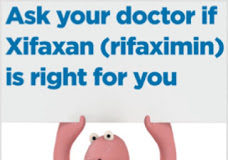 NOTE: Please read the comments to this post from Rob at JNJ Healthcare.
NOTE: Please read the comments to this post from Rob at JNJ Healthcare.
A lot of brouhaha is being made about pharmaceutical companies opening channels, pages, and groups on YouTube and Facebook.
Huge multi-national companies with huge promotional budgets like Johnson & Johnson (JNJ) — number 8 in Advertising Age’s list of the TOP 100 US advertisers in terms of measured media spend (see “Marketing Mix of Leading Pharma Advertisers“) — pay exactly the same fee to set up channels, groups, and applications on these social networks as do you and I.
But… and this is a BIG BUT… JNJ has the money to pay for programming, promotion, and celebrity spokespeople. You and I… not so much.
JNJ, for example, pays absolutely NOTHING to set up Facebook “groups” (eg, ADHD Moms, sponsored by McNeil Pediatrics, a JNJ company) and “applications” (eg, Accuminder) and YouTube channels (eg, JNJ’s Health Channel).
JNJ’s Youtube videos are of the highest quality and, like JNJ’s broadcast TV ads, the Youtube videos are without doubt produced by their ad agencies. Do you have an ad agency?
Small point, but if everyone used an ad agency to develop content for social networking sites, we could no longer call content on these sites “user-generated.”
BTW, I like the JNJ videos highlighting JNJ employees who also participated in the Olympic Games — nice to see real, lower echelon employees of pharmaceutical companies and hear about their interests and motivations!
What About Dialog and Sharing Comments?
Part of social networking is the ability of ordinary people like you and me — JNJ customers — to add comments to social networks set up by others. Usually when pharmaceutical companies host a social network channel, they turn off the comments for obvious and understandable reasons.
Social networking etiquette, however, requires transparency and drug companies should be upfront about their comment policies on sites.
JNJ’s YouTube channel seems to accept comments about their videos, but when I submitted the comment “Nice video!,” it somehow “got lost in the tubosphere” and never made it on to the site. I did receive a message apologizing for that from JNJHealth. Kudos to them for that! But I don’t see JNJ’s comment policy on the site. I responded to JNJ’s message and asked them about it, but have not yet heard back from them.
I suspect, however, that my “glitch” was the rule rather than the exception: although some of JNJ’s videos have been viewed over 11,000 times, there are NO published comments whatsoever. To use an analogy with Seinfeld’s “car reservation skit,” JNJ takes comments, but doesn’t seem to know how to hold and publish comments, which is the whole point of social networking.
McNeil’s Facebook ADHD Moms Group allows you to become a “fan” but that’s about it. In all other respects it looks and acts just like any Web 1.0 site!
My “Pharma Marketing News Fans” Facebook group, however, includes a discussion board and “The Wall” where anybody can post messages. You can also be a fan! (I haven’t done much with this yet — I am still learning.)
Celebrity Social Networking
Debbie Phelps — Olympic Gold Medal winner Michael Phelps’ mom — is a Leader of ADHD Moms and she is a paid spokesperson for McNeil Pediatrics — a fact that is revealed in her bio. She contributes to a “Monthly Feature” column and this month her piece is entitled “Back to School: Help Your Child with ADHD Succeed In and Out of the Classroom.”
I really like and admire Debbie Phelps and her son — they are REAL people and my son looks enough like Michael that I am sure he would be confused with Michael if he were to walk through Tiananmen Square. But I digress…
Debbie Phelps works as a school principal in what appears to be an inner city Baltimore middle school. On top of all that, she had to deal with Michael’s ADHD, which is treatable but incurable — you have it all your life and you have to learn to deal with it. McNeil’s ADHD drug Concerta is one way to deal with it.
But Debbie doesn’t talk about Concerta in her piece cited above. She does, however, mention “behavioral modifications combined with medication” several times. Also, I am sure the piece was ghost written, a fact not mentioned — which is another breach of social networking guidelines.
I asked Debbie to be my friend on Facebook, but so far, I have not heard back from her — perhaps another communication lost in translating social networking to pharma-style social networking (see “Social Marketing Pharma Style“).
Ghost-written content, one-way communications, paid spokespeople, professional production, etc., etc. Seems that pharmaceutical marketers are shoving social networks into the same one-way communications box as all other channels they use for marketing purposes.
P.S. Here’s what Marc Monseau, JNJ Corporate Communications Director and blogger over at JNJ BTW, had to say about the ADHD Moms Facebook page:
“Now to be fair, this Facebook page, ADHD Moms, still isn’t all that interactive. Though visitors can download podcasts, articles and participate in instant polls, they can’t post comments to the wall on the page. What they can do, though, is use their own Facebook pages to connect with other ADHD Moms fans. It’s a baby step, to be sure, but I understand the team is looking at other steps they can take to make it easier for people to share their insights into caring for kids with ADHD.”









![6 Digital Tools at the Center of Healthcare Digitalization [INFOGRAPHIC]](http://ec2-54-175-84-28.compute-1.amazonaws.com/pharma-mkting.com/wp-content/uploads/2021/04/6DigitalTools_600px-100x70.jpg)




